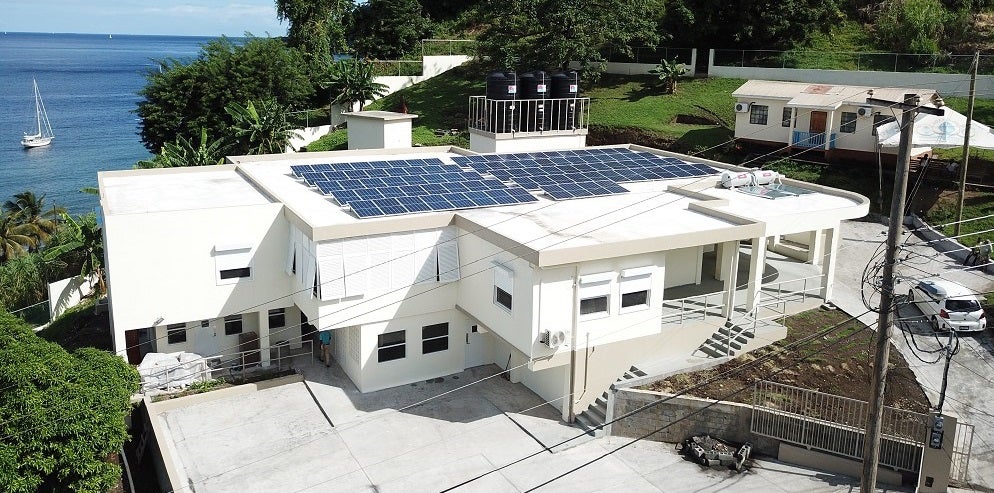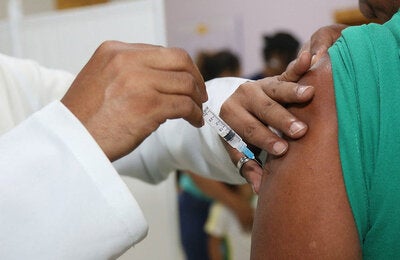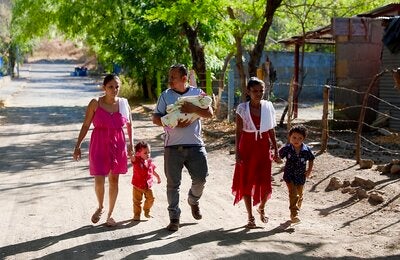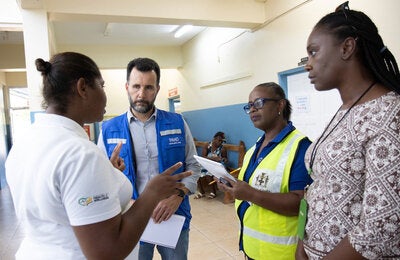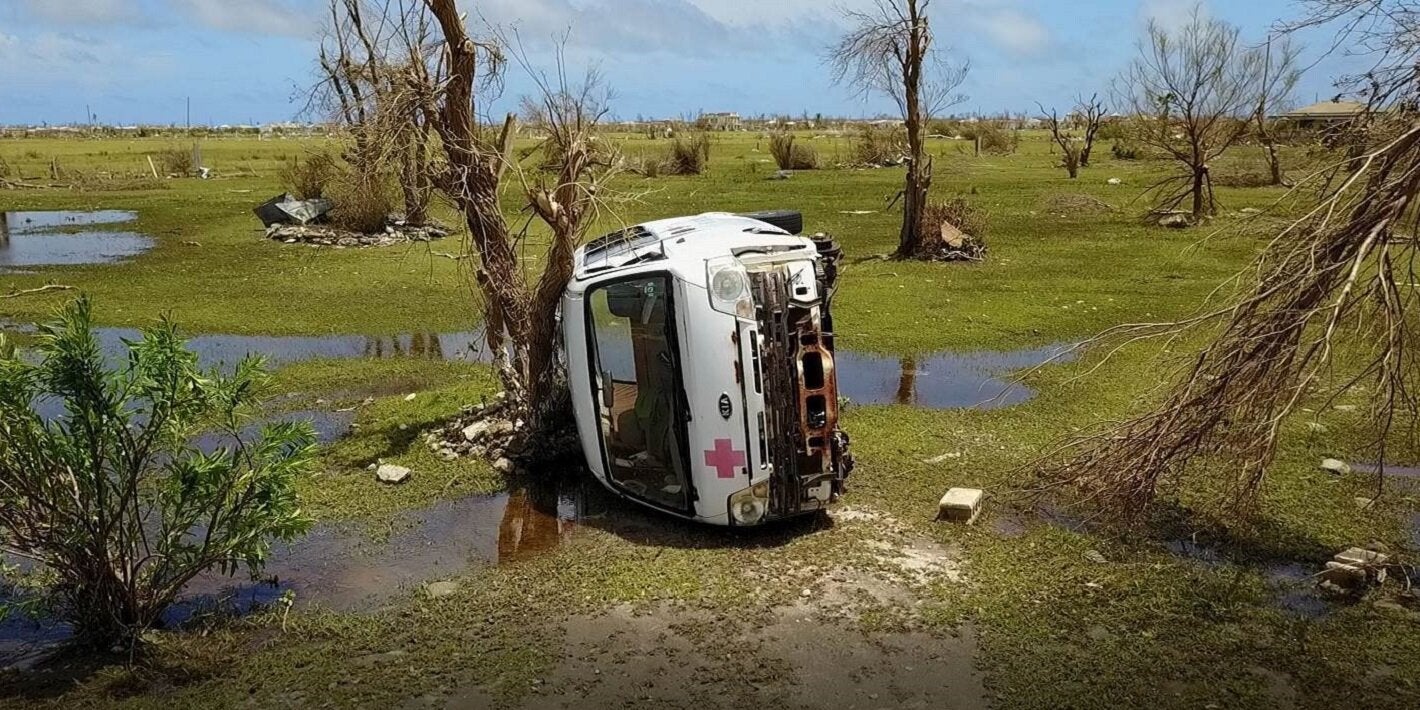
Introduction
The Pan American Health Organization continues to strengthen its commitment to disaster risk reduction. On the International Day for Disaster Risk Reduction, designated by the United Nations General Assembly, we celebrate the progress the Region of the Americas has made in disaster risk reduction. It is also a day when we acknowledge the loss of life, health and livelihood that have been experienced in the Region as a result of emergencies and disasters. Adopted at the Third UN World Conference on Disaster Risk Reduction in March of 2015, the Sendai Framework for Disaster Risk Reduction 2015-2030 includes seven strategic targets and 38 indicators to measure progress in the reduction of disaster risk and adverse outcomes of disasters.1
PAHO’s Plan of Action for Disaster Risk Reduction 2016-2021 includes four strategic lines of action, in alignment with the Sendai Framework, as well as indicators for each objective and critical capacity goals to continue strengthening disaster risk reduction to prevent death, disease, disability, and the psychosocial impact resulting from emergencies and disasters. The Plan of Action for Disaster Risk Reduction 2016-2021 is inclusive of three main approaches: people-centered, multi-hazard, and inclusivity of gender, equity, ethnic group, human rights, and disability, all while including actors on a subnational and national stage.2
The Sendai Seven Global Targets:
Substantially reduce global disaster mortality by 2030, aiming to lower the average per 100,000 global mortality rate in the decade 2020- 2030 compared to the period 2005-2015;
Substantially reduce the number of people affected globally by 2030, aiming to lower the average global figure per 100,000 in the decade 2020- 2030 compared to the period 2005-2015;
Reduce direct disaster economic loss in relation to global gross domestic product (GDP) by 2030;
Substantially reduce disaster damage to critical infrastructure and disruption of basic services, among them health and educational facilities, including through developing their resilience by 2030;
Substantially increase the number of countries with national and local disaster risk reduction strategies by 2020;
Substantially enhance international cooperation to developing countries through adequate and sustainable support to complement their national actions for implementation of the present Framework by 2030
Substantially increase the availability of and access to multi-hazard early warning systems and disaster risk information and assessments to people by 2030.
2020 Focus: Substantially increase the number of countries with national and local disaster risk reduction strategies by 2020
This year, the Global Target focus of the Sendai Framework is Target (e): Substantially increase the number of countries with national and local disaster risk reduction strategies by 2020. This target is closely linked with Priority for Action 2: “Strengthening disaster risk governance to manage disaster risk,” of the Sendai Framework, and Strategic Line of Action 2: “Governance of disaster risk management in the health sector,” of PAHO’s Plan of Action for Disaster Risk Reduction. The development and implementation of strategies to prepare for, respond to, and recover from disasters and the promotion of leadership in disaster risk reduction better prepares countries for emergency situations.
According to the 2019 Progress Report for the Plan of Action for Disaster Risk Reduction 2016-2021, 16 of the 35 PAHO Member States have full time staff assigned to disaster risk reduction and 5 are working towards the goal. Full time staff serve to strengthen the organizational structure of disaster risk management offices in ministries of health (Objective 2.1) as human resources and financial buy-in are essential to ensure efficient coordination among the various levels of disaster risk reduction.
Additionally, 24 Member States of the Americas have a sectoral mechanism for coordination, implementation, and monitoring of disaster risk management for health. This mechanism works to promote country leadership in disaster risk management for health, fostering sectoral and intersectoral work (Objective 2.2). By strengthening the integrated incident management to ensure participation across sectors, responding to emergencies and disasters can be implemented more effectively and efficiently. Clarifying responsibilities without taking authority away from the different levels and actors reinforces the disaster risk reduction strategies.
In addition to having national and local disaster risk reduction strategies, and strengthening the governance surrounding these strategies, 24 Member States have tested their plans and procedures for disaster response and early recovery. The Region of the Americas is proving its commitment to disaster risk reduction and is progressing towards stronger disaster risk governance.3
Multi-hazard Approach and COVID-19
The need for a multi-hazard approach is a core concept for the Plan of Action for Disaster Risk Reduction, but it is stressed by the impact COVID-19 has had in the Region. The pandemic has the presence of systemic risk, as its impacts have continued from the disaster phase to the response phase. With 14,193,356 confirmed cases and almost 500,000 deaths in the Americas, it is clear that COVID-19 is testing the Region’s plans. In response, 20 countries have integrated COVID-19 surveillance into their SARI/ILI systems. Costa Rica hosted a meeting with UN agencies to establish priorities for resource mobilization to support persons with disabilities, a vulnerable population often left behind in disaster risk reduction. Panama provided technical support to develop a guide for health care in the face of COVID-19, specifically targeted to migrants and refugees. Underlining the theme of stronger governance across sectors, Chile facilitated an interagency consultation with various UN agencies to examine issues related to the reopening of schools. Participation across all levels and from all populations is essential for effective disaster risk reduction, especially as we face ever-changing challenges.4
Biological risks do not end with COVID-19. Further integration of these emergencies must occur to have a fully robust disaster risk reduction strategy. As COVID-19 continues to emphasize the need for risk management in biological contexts, PAHO Member States continue to face challenges. The teams in Costa Rica, Honduras and Nicaragua collaborated with development partners to present the critical roadmap to high-level policy makers in these countries, with the aim of advancing the formulation of binational agreements to address malaria4. Further integrating strategies to reduce infectious and biological events into disaster risk reduction plans and methodologies will create a more resilient system.
Investing in Disaster Risk Reduction: Smart Hospitals
In order to reach the 2020 focus target of substantially increasing the number of countries with national and local disaster risk reduction strategies, Priority 3 of the Sendai Framework: Investing in Disaster Risk Reduction for Resilience must be emphasized. A key part of disaster risk reduction strategies includes investing in sustainable practices. This aligns with the Plan of Action for Disaster Risk Reduction Strategic Line of Action 3: Safe and Smart Hospitals. By adopting the Safe Hospitals program, countries can further promote development of up-to-date standards and strategies, and ensure health facilities can maintain operating capacity during a disaster.2
The Caribbean region adopted the Smart (Safe + Green) Hospital project, a £43.3M project implemented by PAHO and funded by the United Kingdom’s Foreign, Commonwealth & Development Office. Besides the Ministries of Health, other sectors, including Education, organizations and donors, are using the Smart concept. Since the inception of the project in May 2015, over 1000 people have been trained in the use of the Smart standards. Twenty out of 50 health care facilities finalized their retrofitting process resulting in enhanced safety standards, reduced down time and damage from natural hazards, and lower operating expenditures in terms of water and electricity consumption. This strategy for disaster risk reduction can greatly influence local response to a disaster and enhance the health care field’s capacity nationally. Sustainable and inclusive practices for resilience require investment and dedication, as shown by our Member States.
Recommendations
In order to meet the goals for the Sendai Framework for Disaster Risk Reduction and the Plan of Action for Disaster Risk Reduction 2016-2021, countries must reaffirm their commitment to the cause. Investing financial, legislative, and human resources is essential and should include links with sector policies in areas such as land use, building codes, public health, education, agriculture, environmental protection, energy, water resources, poverty reduction and climate change adaptation1. Further, these policies and strategies must include participation of persons with disabilities, women, indigenous populations, among others, to ensure an equitable approach to disaster response and preparedness. Using the Plan of Action for Disaster Risk Reduction 2016-2021 targets and indicators to measure progress of the Region is a vital part in furthering our progress. Creating strategies with a true multi-hazard approach will improve the overall lives and health of the Region.
Sources:
- United Nations (2020). Concept Note International Day for Disaster Risk Reduction 2020. Office of United Nations Disaster Risk Reduction.
- Pan American Health Organization (2016). Plan of Action for Disaster Risk Reduction 2016-2021. CD55.R10. Pan American Health Organization
- Pan American Health Organization (2020). Progress Report for Plan of Action for Disaster Risk Reduction 2016-2021. Pan American Health Organization.
- Pan American Health Organization (2020). COVID-19 Situation Report 07 September 2020. Pan American Health Organization

